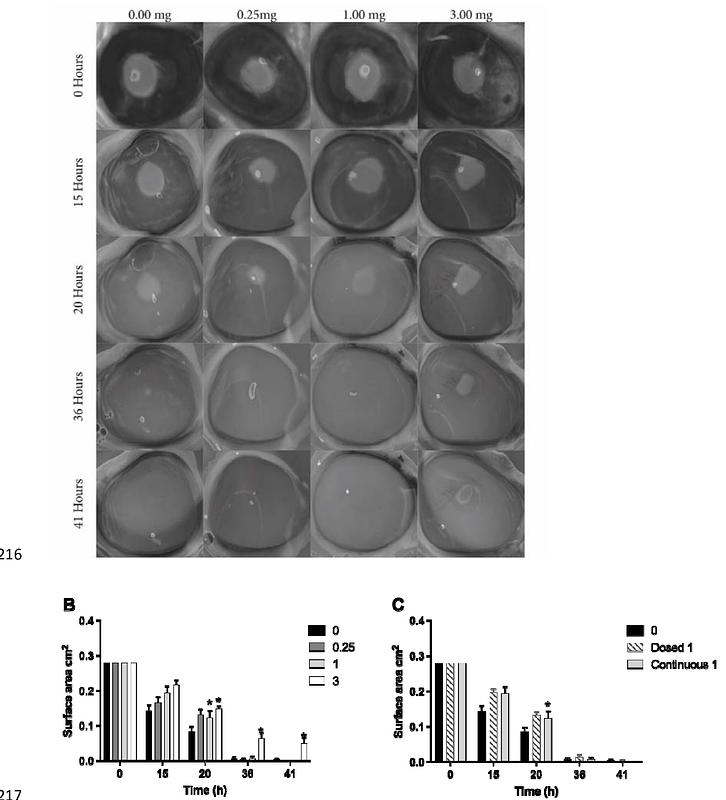The effect of ciprofloxacin and gentamicin on wound healing in ex vivo sheep cornea model

The effect of ciprofloxacin and gentamicin on wound healing in ex vivo sheep cornea model
Okurowska, K.; Suarez, D. R. M.; Karunakaran, E.
AbstractPurpose: Our objective was to assess the efficacy of an ex vivo sheep corneal model as an alternative for live animal testing in screening drug cytotoxicity. In pursuit of this goal, we investigated the impact of two commonly used topical antibiotics, ciprofloxacin and gentamicin, on wound healing. Furthermore, we examined different antibiotic dosages and dosing regimens to understand their effects comprehensively. Methods: The epithelium on ex vivo sheep corneas was removed with a scalpel, and the area was treated with ciprofloxacin (0.1, 0.3, and 1 mg mL-1), gentamicin (0.25, 1, and 3 mg mL-1), or phosphate-buffered saline (control). The corneas were exposed to treatments continuously or twice daily for ten minutes. Wound closure was observed by fluorescein retention and histological staining. Results: Untreated corneas healed within 41 hours. Continuous exposure to both ciprofloxacin and gentamicin significantly reduced the corneal healing ability in a time- and concentration-dependent manner. Overall, ciprofloxacin was found to be more toxic than gentamycin. However, this model showed that the corneal epithelium could heal effectively when both antibiotics were administered intermittently. Conclusion: Ciprofloxacin demonstrated greater inhibition of wound healing compared to gentamicin, aligning with in vivo studies. The administration of drops several times daily mitigated the toxic effects of antibiotics. The ex vivo sheep wound healing model holds promise as an alternative approach to in vivo toxicity testing, enabling the swift evaluation of novel antimicrobial treatments and eye drop additives.